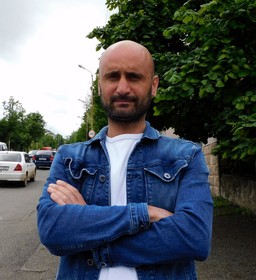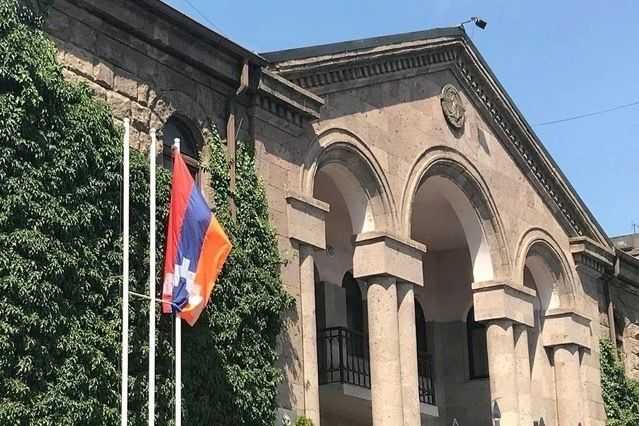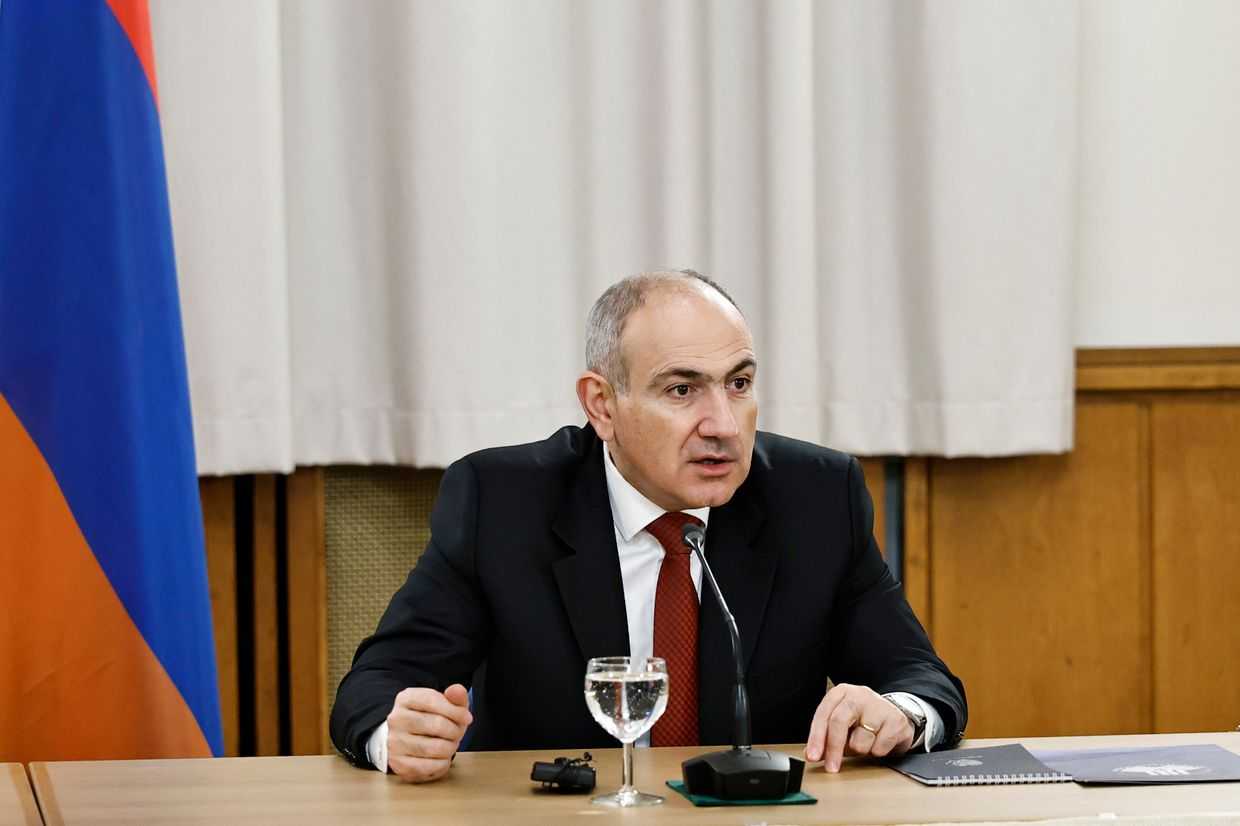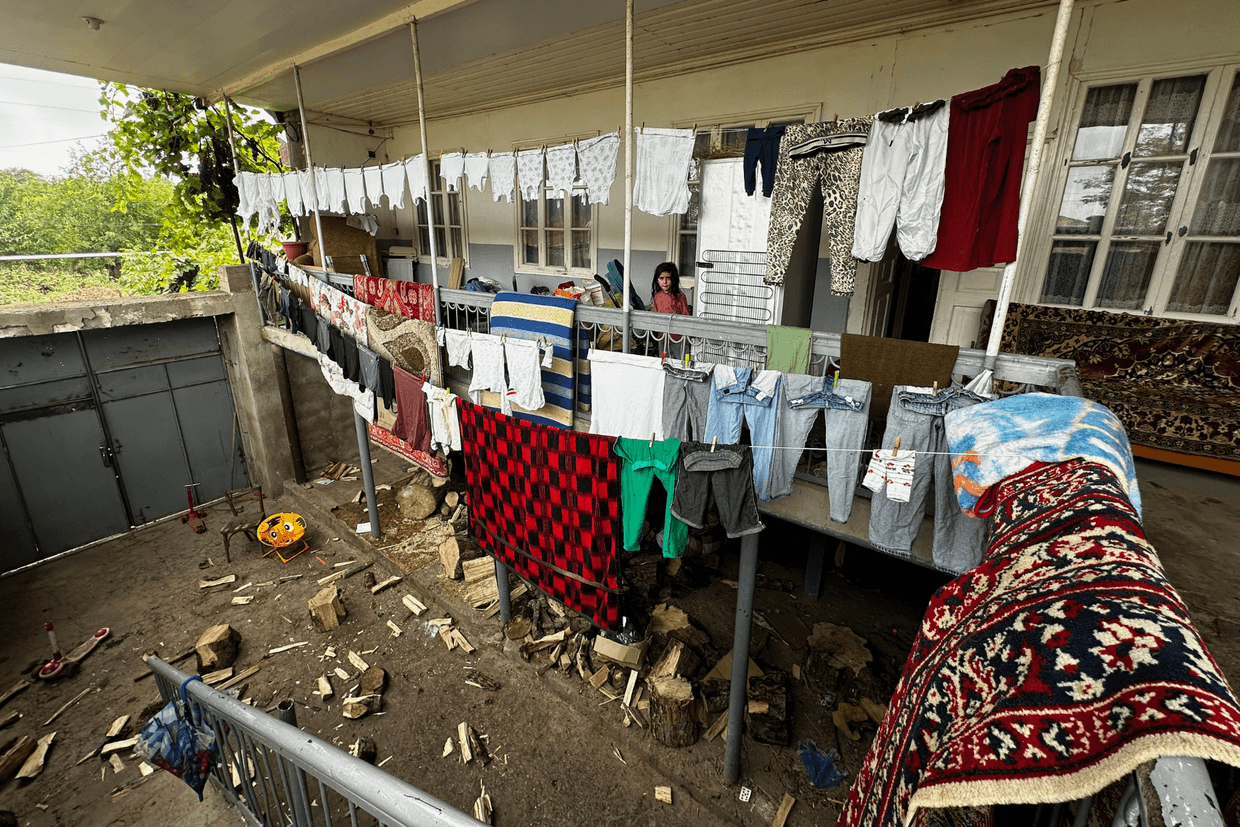Nagorno-Karabakh’s Armenians struggle to cling to their identity
Following the mass displacement in 2023, Nagorno-Karabakh Armenians have struggled to preserve their identity, dialect, and culture.

For decades, Donara Gasparyan baked Zhingyalov hats — a type of flatbread stuffed with finely diced herbs, which is a symbol of Nagorno-Karabakh culture and cuisine — and sold them on the Stepanakert market. After fleeing Nagorno-Karabakh in 2023 following Azerbaijan’s military takeover, she resumed her business in Yerevan. While she is happy with her income, the money is not what is important to her.
‘We could not bring Nagorno-Karabakh with us, but let’s try to keep the taste and smell of it. Herbs in Armenia don’t have the same aroma as in Nagorno-Karabakh, but in any case, I do my best to bake deliciously’, she tells OC Media.
Despite its small area, the regions of Nagorno-Karabakh have their own subcultures and specific dialects. Following the 2023 exodus, many former village mayors proposed that the Armenian government resettle their displaced residents in one area of Armenia, to allow them to preserve their traditions and dialects. In the end, however, Nagorno-Karabakh refugees ended up scattered across the country; if they even chose to remain in the first place.
This has affected the preservation of the Nagorno-Karabakh culture. Financial resources, which many refugees lack, further hinder the process. Even so, some are finding ways to preserve their identities, including with the help of the Armenian diaspora.

‘Don’t bark your dog language in my Armenia’
Tatevik Khachatryan and Mariam Sargsyan host a podcast in the Nagorno-Karabakh dialect, which aims to preserve not only the dialect, but also their culture and identity more broadly.
The Nagorno-Karabakh dialect of Armenian differs significantly from the language spoken in Yerevan, to the extent that speakers of each have a hard time fully understanding each other. While literary Armenian was taught at schools in Nagorno-Karabakh, the primary language of its inhabitants in daily life was the dialect, which continues to be what most of the displaced population speaks.
‘This is not just about preserving our dialect. It is also aimed at digitising human stories, as Nagorno-Karabakh Armenians are much more honest and free while speaking their own dialect’, Khachatryan tells OC Media.
But one podcast, she says, is not enough to preserve their cultural heritage.
‘Today, our dialect is preserved at the cost of our enthusiasm, and it is unclear how long this can last’ Khachatryan says.
‘Personally, I communicate with my son in the Nagorno-Karabakh dialect, but I notice that words from the Yerevan jargon are being added to his vocabulary’, she adds.

In addition, the response to the podcast in Armenian society has not always been positive.
Khachatryan notes that they often receive negative and insulting comments underneath their posts on social media, such as ‘Don’t bark your dog language in my Armenia’ or ‘Go to your father Putin, maybe he’ll give you a place to live’.
There is a reputation that Nagorno-Karabakh Armenians are more pro-Russian than those within Armenia, and that the level of Russian influence was higher. From the perspective of Nagorno-Karabakh Armenians, many felt no personal allegiance to Russian President Vladimir Putin or the Kremlin, but rather that there was no alternative source of protection.
‘I won't even talk about the sexual insults’, Khachatryan says. ‘My dad’s name is Garik Khachatryan and Mariam’s dad’s name is Yuri Sargsyan, and Putin is not our dad.’
‘Armenia is our country too’, Sargsyan says. ‘We hold the same blue passport as every other Armenian citizen, we pay taxes like everyone else. Many simply don’t realise what it’s like to lose a home, and I don’t wish other compatriots to suffer our fate’.
‘We did not come to Armenia empty-handed’
Following the Second Nagorno-Karabakh War in 2020, Azerbaijan gained control over the town of Hadrut and the surrounding area, with the ethnic Armenians living there becoming refugees much sooner than the rest of the Armenian population of Nagorno-Karabakh. This has allowed them more time to integrate and adapt in Armenia.
In 2021, the Dizak Art Cultural and Youth Centre was opened in Yerevan by members of the Hadrut community, followed by the creation of a civil society organisation under the same name. The group organises various cultural events — from book presentations to summer camps — focused around Nagorno-Karabakh’s heritage, including traditional dance, music, games, and embroidery.

Until 2023, the Nagorno-Karabakh government provided financial support to cultural organisations, but following the 2023 exodus and the dissolution of the government, cultural centres like the Dizak Art Cultural and Youth Centre have been forced to rely on small grants and the support of benefactors.
For many such organisations and businesses, much of that support has come from the Armenian diaspora, who have been successful in preserving the Armenian language and culture abroad for centuries.
For example, after receiving financial support from the New York-based Armenian General Benevolent Union (AGBU), Vadim and Kristina Balayan were able to reopen their Art Café in downtown Yerevan. The cafe has since become a gathering place for other Nagorno-Karabakh Armenians, hosting a variety of cultural events, from fairs to baking workshops.
‘One tries to motivate, to inspire others’, Vadim Balayan tells OC Media, adding that he was personally inspired by seeing Nagorno-Karabakh Armenians come to the café.
Foreign embassies in Armenia have also implemented a number of successful projects for Nagorno-Karabakh refugees.
Yet, as Armine Hayrapetyan, the former director of the State Service for the Preservation of the Historical Environment of Nagorno-Karabakh, points out, while civil society groups and embassies are showing support, what is missing is a ‘state approach’.

‘Naturally, we didn’t come to Armenia empty-handed. We brought our culture, traditions, cuisine, our potential with us’, Hayrapetyan tells OC Media. ‘But neither is that potential used, nor are cultural issues properly discussed’.
‘I have heard that these NGOs have asked UNESCO to send a mission to Nagorno-Karabakh, I have heard that they have organised fundraisers for the preservation of cultural centres, but again, this issue needs to be addressed at the state level. Frankly, it is not felt that the authorities of Armenia or Nagorno-Karabakh are concerned about this problem’, he adds.
Hayrapetyan highlighted that while it was nice to hear about financial support from abroad — citing the recent example of the US Embassy providing $74,000 to preserve rare 13th century manuscripts and archival documents from ancient Armenian monasteries in Nagorno-Karabakh — the issue was about more than just money.
‘There is a political subtext. The entire Armenian cultural heritage in Nagorno-Karabakh is under the control of Azerbaijan. Any church can be considered an “illegal structure” and demolished, as happened with Saint Ascension in Lachin’, Hayrapetyan says.
She also highlighted that people often associate culture with cultural monuments, which are two different things.
‘If it were possible for Nagorno-Karabakh Armenians to live compactly in one settlement, they would automatically speak their dialect and would be able to preserve their traditions, but then we need to think about how to preserve the monuments remaining in Nagorno-Karabakh’.
‘Preserving culture, traditions, and compact living are good ideas, but the “separation” of Nagorno-Karabakh Armenians from the broader Armenian society could strengthen the barrier between the two. This is really a very sensitive issue and one should think twice before taking any action’, Hayrapetyan says.
‘People who have seen the war do not want to live in a border town’
In October, Armenian Prime Minister Nikol Pashinyan stated that it was the government’s policy to do ‘everything possible to ensure that all our brothers and sisters forcibly displaced from Nagorno-Karabakh remain in the Republic of Armenia’. Yet over the past year, thousands of Nagorno-Karabakh Armenians have left, citing social difficulties in the country.
Despite the promise of support, rumblings of discontent from Nagorno-Karabakh refugees often persist online and behind closed doors, with some going so far as to suggest the government was deliberately sabotaging attempts to build distinct communities within Armenia.
Some suspect the government fears a return to power of the ‘Karabakh Clan’ — a name given to former Armenian presidents Robert Kocharyan and Serzh Sargsyan, both of whom are from Nagorno-Karabakh, and their supporters.
From the beginning of the refugee crisis, Armenian government initiatives have focussed on resettling Nagorno-Karabakh Armenians in provinces near the border, such as in Syunik Province, where the dialects are similar and there were cultural similarities.
For example, many Nagorno-Karabakh Armenians settled in the border town of Goris, but today, only around 1,300 of them remain. The number of jobs in Goris is barely enough for the locals, and there are few flats available to rent. Schools, sports activities, universities — everything is in Armenia’s capital, Yerevan.

‘Our students also went to Yerevan for university’, a local taxi driver in Goris tells OC Media. ‘Goris is a nice, clean, and quiet place to live, but people who saw the war don’t want to live in a border town, that’s why they have left.’
For Kristine Sarukhanyan, the difficult social situation and the realisation that the government support programme for refugees was not enough to live on led her to move to Krasnodar, Russia.
Sarukhanyan was a beneficiary of the 40+10 thousand programme — which provides refugees from Nagorno-Karabakh ֏40,000 ($100) per month for housing and another ֏10,000 ($25) for utilities.‘We couldn’t find a job. This financial support from the Armenian government was coming late or not at all, and how do I explain this to the landlord who is demanding that we pay on time?’, Sarukhanyan tells OC Media.

She has found a number of other Nagorno-Karabakh Armenians in Krasnodar, as well as Armenians from Armenia who prefer to live in Russia. Yet while there are many similarities to life in Nagorno-Karabakh, it is not the same.
‘One thing is clear for all Nagorno-Karabakh Armenians, and I think they will agree with me that it was a wonderful place, just a paradise. We are in Nagorno-Karabakh every day with our family, soul, and heart, and we all dream to return to our home, our homeland, nothing more’, Sarukhanyan says.









